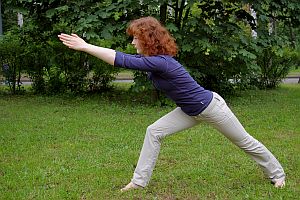Chiropractic Patients Recover Faster, Spend Less Money
Back pain is an expensive health problem for both patients and businesses. A 2012 study reported that we spend about $635 billion on pain every year, with a significant amount of that spent on back pain. Over the years, quite a few studies have shown that chiropractic care is more effective for back pain than medical care, plus chiropractic patients spend less money on their care than medical patients do.
Because back pain is such a common problem, a group of Canadian researchers recently investigated the role that the type of primary caregiver has on financial compensation.
This was a large study of 5,511 patients who experienced a work-related back injury in Ontario, Canada. The patients saw the following providers for their first visit:
- 85.3% saw a medical doctor
- 11.4% saw a chiropractor
- 3.2% saw a physical therapist
The authors set out to “compare the duration of financial compensation for back pain” among patients from each care group.
The study found that chiropractic patients had the shortest amount of time receiving compensation for their pain and also were less likely to have a recurrence.
In addition, chiropractic patients didn’t need to see other healthcare providers for their pain. 75% of chiropractic patients saw no other provider, while 58.6% of physical therapy patients also saw a medical doctor.
The authors conclude:
“The type of healthcare provider first visited for back pain is a determinant of the duration of financial compensation during the first 5 months. Chiropractic patients experience the shortest duration of compensation, and physiotherapy patients experience the longest.”
Blanchette M, Rivard M, Dionne CE, et al. Association between the type of first healthcare provider and the duration of financial compensation for occupational back pain. Journal of Occupational Rehabilitation 2016 Sep 17.
Today’s article was written by Michael Melton and is shared from the following website: https://www.chironexus.net/2016/09/chiropractic-patients-recover-faster-spend-less-money/


 The National Highway Traffic Safety Administrations reports that more than two million people are injured every year in auto-related accidents involving either a passenger vehicle, large truck, or motorcycle. Furthermore, that number appears to be climbing at an alarming rate, increasing more than five percent between 2014 and 2015 alone.
The National Highway Traffic Safety Administrations reports that more than two million people are injured every year in auto-related accidents involving either a passenger vehicle, large truck, or motorcycle. Furthermore, that number appears to be climbing at an alarming rate, increasing more than five percent between 2014 and 2015 alone. Sciatica pain is often so debilitating that it forces people to miss work and other normal activities. Of all patients with low-back pain, sciatica patients have the highest level of disability (1). In fact, patients with sciatica are disabled for an average of 72 days according to Norwegian public-health records.
Sciatica pain is often so debilitating that it forces people to miss work and other normal activities. Of all patients with low-back pain, sciatica patients have the highest level of disability (1). In fact, patients with sciatica are disabled for an average of 72 days according to Norwegian public-health records. We recently posted about standing desks. For those of you who are looking for some good information on standing desks, today we are sharing a review on some standing desks. Standing desks are a great option where they are allowed! Standing desks can be of great benefit by allowing greater circulation while you are working at your desk! Wonderful for those of us who spend a considerable amount of time sitting at a desk!
We recently posted about standing desks. For those of you who are looking for some good information on standing desks, today we are sharing a review on some standing desks. Standing desks are a great option where they are allowed! Standing desks can be of great benefit by allowing greater circulation while you are working at your desk! Wonderful for those of us who spend a considerable amount of time sitting at a desk! Manual therapies have been used to treat musculoskeletal disorders for thousands of years. Practitioners around the world—in countries with many different cultural influences and diverse medical traditions—have used their hands to manipulate various parts of the body to stimulate healing. “Manual” literally means “by hand.” Thus, manual therapies consist of healing techniques that use the hands. There are more than two dozen techniques used worldwide. Among the most commonly known are acupressure, chiropractic, massage therapy, physiotherapy, reflexology, Rolfing and shiatsu.
Manual therapies have been used to treat musculoskeletal disorders for thousands of years. Practitioners around the world—in countries with many different cultural influences and diverse medical traditions—have used their hands to manipulate various parts of the body to stimulate healing. “Manual” literally means “by hand.” Thus, manual therapies consist of healing techniques that use the hands. There are more than two dozen techniques used worldwide. Among the most commonly known are acupressure, chiropractic, massage therapy, physiotherapy, reflexology, Rolfing and shiatsu.
 If you are middle-aged (40-60, by some definitions) or older, here’s 15-second self-test for you. Do you often find yourself needing to sit down or steady yourself against a table when putting on your shoes or stepping into pants? Do you increasingly need to use the armrests of your chair to “push off” when getting up? Do you generally hold on to handrails whenever you go up and down stairs? If you stand with your feet close together, do you feel unsteady and unable to balance yourself properly?
If you are middle-aged (40-60, by some definitions) or older, here’s 15-second self-test for you. Do you often find yourself needing to sit down or steady yourself against a table when putting on your shoes or stepping into pants? Do you increasingly need to use the armrests of your chair to “push off” when getting up? Do you generally hold on to handrails whenever you go up and down stairs? If you stand with your feet close together, do you feel unsteady and unable to balance yourself properly? If you’re suffering from acute or chronic back pain–whether it’s been caused by an injury or some type of medical condition–chances are that you’re more interested in finding relief NOW than learning about the many different types of doctors who are part of the healthcare community. But the simple truth is that different types of doctors tend to approach their work in particular ways because of basic differences in their training and clinical experience. This means that it’s worthwhile for a back pain patient to understand at least a little bit about how a physician’s chosen discipline can influence his or her perspective and priorities when it comes to treatment.
If you’re suffering from acute or chronic back pain–whether it’s been caused by an injury or some type of medical condition–chances are that you’re more interested in finding relief NOW than learning about the many different types of doctors who are part of the healthcare community. But the simple truth is that different types of doctors tend to approach their work in particular ways because of basic differences in their training and clinical experience. This means that it’s worthwhile for a back pain patient to understand at least a little bit about how a physician’s chosen discipline can influence his or her perspective and priorities when it comes to treatment.